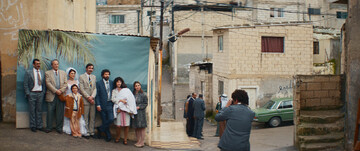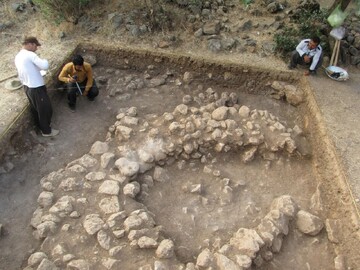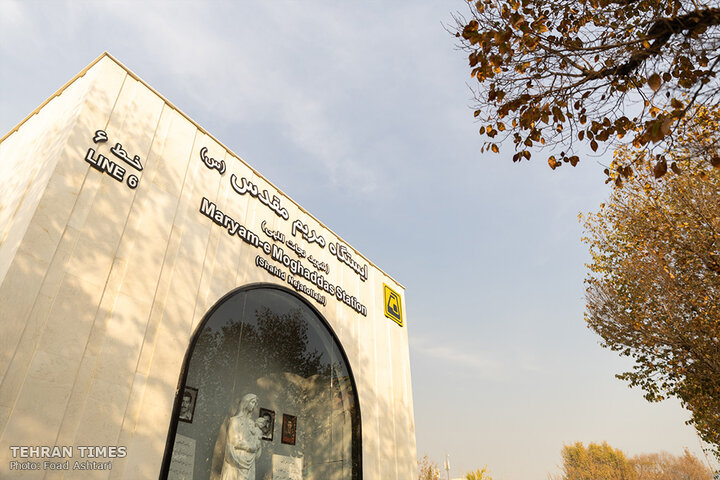-
 2025-12-01 21:34
2025-12-01 21:34
By Faramarz Kouhpayeh
Bully politics: The American style
Trump calls Maduro, tells him to step down and leave Venezuela or get attacked
TEHRAN – American commentators trying to make sense of U.S. President Donald Trump’s governing style say he is not mentally intact or that he has an unstable personality easily swayed by the last person he speaks to.
-

By staff writer
From accord to atrocity: Gaza human cost mounts under broken truce
TEHRAN – The U.S.-brokered ceasefire that went into effect on October 10 was designed to end two years of relentless Israeli military operations in Gaza. Yet, less than two months later, it has proven to be little more than a paper promise.
-

By Nabil Mansour
Could the Pope’s Lebanon visit temper Israeli threats and mend political divisions?
BEIRUT - Pope Leo XIV’s arrival in Beirut—his first foreign trip since ascending the papacy—comes at a moment when Lebanon is poised between escalating Israeli threats and a political class locked in chronic division.
-

By Wesam Bahrani
West Bank raids deepen as annexation calls rise
TEHRAN – The Israeli regime is escalating its raids in the West Bank amid rising calls to formally annex the occupied territories.
-

By Soheila Zarfam
Israel, not Russia, is damaging Iran-Poland ties
TEHRAN - Iran and Poland have traditionally enjoyed frictionless ties. However, this relationship hit a snag in October when Polish Foreign Minister Radosław Sikorski attended an anti-Iran presentation at the UK Parliament.
-

By Ali Hamedin
“All That’s Left of You”: a story shot in the eye of the storm
TEHRAN- “All That’s Left of You” is the latest work by Cherien Dabis — the Palestinian-American director, writer, and actor. Released in January 2025, the film places the audience on a historical journey, from the beginning of the Nakba (1948) to present-day Palestine, following the story of a single family to illuminate the harrowing fate of a people whom Zionist forces sought to erase from history.
Politics
-

What Iran’s foreign ministry spokesman said at his weekly briefing
TEHRAN – At his weekly press conference, Iran’s Foreign Ministry spokesperson Esmaeil Baqaei addressed a wide range of regional and international issues — from escalating tensions in Lebanon and Gaza, to relations with Saudi Arabia and Turkey, to the state of nuclear talks with Europe.
-

Iran hosting SCO joint anti-terror drills
TEHRAN – The Ground Force of Iran’s Islamic Revolution Guards Corps (IRGC) is hosting large-scale joint counter-terrorism manoeuvres being conducted by member states of the Shanghai Cooperation Organization (SCO).
-

Eswatini-flagged vessel smuggling fuel seized in Persian Gulf
TEHRAN – A commander of Iran’s Islamic Revolution Guards Corps (IRGC) says an Eswatini (Swaziland)-flagged vessel carrying 350 Liters of contraband fuel has been seized in the Persian Gulf waters.
Sports
-

Iran’s U17 elimination signals a deeper football crisis
TEHRAN - Iran’s 2–1 defeat against India, and the subsequent failure to qualify for the AFC U17 Asian Cup 2026, was more than just a disappointing result. It was the latest and clearest symptom of a deep, structural crisis gripping Iran’s youth football system.
-

Marko Bakic misses Tehran derby
TEHRAN – Persepolis will be without iconic midfielder Marko Bakic for the Tehran derby against Esteghlal.
-

Iran’s Abazari takes silver at 2025 World Karate Championships
TEHRAN – Saleh Abazari of Iran seized a silver medal at the 2025 World Karate Championships Sunday night.
Culture
-

“All That’s Left of You”: a story shot in the eye of the storm
TEHRAN- “All That’s Left of You” is the latest work by Cherien Dabis — the Palestinian-American director, writer, and actor. Released in January 2025, the film places the audience on a historical journey, from the beginning of the Nakba (1948) to present-day Palestine, following the story of a single family to illuminate the harrowing fate of a people whom Zionist forces sought to erase from history.
-

Imam Reza (AS) Intl. Festival to showcase art, literature, scholarly works
TEHRAN- The 22nd edition of Imam Reza (AS) International Festival is scheduled to be held in various provinces in Iran in April 2026, featuring a diverse range of cultural, artistic, and scholarly programs.
-

Iranian animation “The Legend of Sepehr” wins top award at Tanzanite International Film Festival
TEHRAN – The Iranian animated film “The Legend of Sepehr” directed by Emad Rahmani and Mehrdad Mehrabi won the top award of the Tanzanite International Film Festival, which was held in Dar es Salaam, Tanzania, from November 27 to 29.
Economy
-

Top petchem companies to gather in Kish for Iran Petrochem 2026
TEHRAN – Leading companies in Iran’s petrochemical industry will gather on Kish Island in mid-January 2026 for the third Iran Petrochem International Conference and Exhibition (Petrochem 2026), aimed at addressing sector challenges and showcasing the latest innovations, products, and technologies.
-

Indonesia aims to expand economic cooperation with Iran, envoy says
TEHRAN – Indonesia is seeking to deepen economic cooperation with Iran, with a focus on high-tech industries, investment and private-sector engagement, the country’s ambassador said during a meeting with the governor of Isfahan.
-

Iran, Pakistan ink several MOUs in Karachi intl. food, agriculture expo
TEHRAN- The ambassador of Pakistan to Tehran stated that a trade delegation from Iran participated in the Karachi International Food and Agricultural Exhibition, and during the event, the two countries signed several memoranda of understanding, including a $4 million trade agreement.
Society
-

Health Insurance Organization, Tajikistan health ministry to boost ties
TEHRAN – The Head of the Iranian Health Insurance Organization, Mohammad-Mehdi Nasehi, and the Minister of Health and Social Protection of Tajikistan, Jamoliddin Abdullozoda, have agreed to promote cooperation between the two countries in the field of medical health insurance.
-

Workshop held to promote national immunization capacity
TEHRAN – Supported by the Global Alliance for Vaccines and Immunization (Gavi), the Vaccine Alliance, and the World Health Organization (WHO), in cooperation with the Ministry of Health and Medical Education (MoHME) of Iran, has organized a workshop to promote Iran’s National Immunization Technical Advisory Group (NITAG) capacity.
-

Tehran hosts 2nd Intl. Symposium on Family, Future, Sustainable Bonds
TEHRAN – The Second International Symposium on ‘Family, Future, Sustainable Bonds’ was held on Monday, with President Masoud Pezeshkian and Parliament Speaker Mohammad-Baqer Qalibaf attending the event.
Tourism
-

Excavations reveal secrets of seasonal pastoral camp in Hawraman Mountains
TEHRAN — Newly published findings from rescue excavations at the Bardeh Mar archaeological site in Iran’s Hawraman region are shedding fresh light on the seasonal rhythms of pastoral life during the Islamic period.
-

Iran attractions showcased at Yerevan tourism exhibition
TEHRAN—Iran participated at Yerevan international tourism exhibition which was recently held at Meridian Expo & Event Centre in Yerevan, Armenia.
-

Iran highlights itself as safe, family-friendly destination at QTM 2025
TEHRAN--Iran has taken great steps to boost tourism in the Persian Gulf region by emphasizing its introduction as a safe, family-friendly, and affordable destination at Qatar Travel Mart (QTM 2025).
International
-

From accord to atrocity: Gaza human cost mounts under broken truce
TEHRAN – The U.S.-brokered ceasefire that went into effect on October 10 was designed to end two years of relentless Israeli military operations in Gaza. Yet, less than two months later, it has proven to be little more than a paper promise.
-

Could the Pope’s Lebanon visit temper Israeli threats and mend political divisions?
BEIRUT - Pope Leo XIV’s arrival in Beirut—his first foreign trip since ascending the papacy—comes at a moment when Lebanon is poised between escalating Israeli threats and a political class locked in chronic division.
-

West Bank raids deepen as annexation calls rise
TEHRAN – The Israeli regime is escalating its raids in the West Bank amid rising calls to formally annex the occupied territories.
Video Comment
-

Holy Mary Metro Station marks interfaith unity in Tehran
-

Academics analyze social dimensions of Resistance in Tehran conference
-

Culture minister highlights year of progress in arts, global image enhancement
-

Gazan Journalists attacked by Israel
-

Brother of Iranian scientist murdered in Israeli strike speaks out
Most Viewed
-
$30 Billion Roadmap for Tehran–Ankara Ties
-
Air defense network on full alert, says Iranian commander
-
Saudi deputy FM holds talks in Tehran as Iran calls for stronger regional coordination
-
Iran officially registers sovereignty over trio Persian Gulf islands
-
Iran’s non-oil trade reaches $76.5b in 8 months
-
World now views Iran as a prominent maritime power: Navy chief
-
Law above the clouds: Caracas counters Washington’s illegal threats
-
Israel waging ‘ecocide’ to erase Gaza’s future, expert warns
-
Philippine protesters rally against trillion‑peso corruption scandal
-
Venezuela thanks Tehran for supporting Caracas
-
Lebanon’s war anxiety: Between genuine peril and manufactured panic
-
Sri Lanka cyclone leaves nearly 200 dead with hundreds more missing
-
Iran, Eurasian bloc agree on electronic customs data exchange
-
‘Holding exhibitions hoped to pave way for great leap in Iran-Turkmenistan economic co-op’
-
Bully politics: The American style







